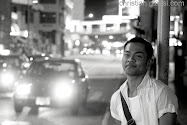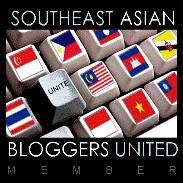"Across The Universe" Got It Across
As an 80’s baby, I never really knew what it was like to live in the hippy era; what the revolution was all about; why the Beatles was definitive of their generation; and what profundity was hidden in their songs. Thanks to the wonderful brain of Julie Taymor, the same brain that brought us “Frida” and “The Lion King”, I now understand a little better.
I initially thought the idea behind “Across the Universe” was very simple: pick 30 of out of the many songs of Beatles, make music videos out of them, then conceptualize a storyline that would gel all 30 of them together. That simple. Still, it was a task Herculean for the novice.
Although it felt like the sole purpose of every character and every scene was to propel the story towards the “Hey Jude” moment, it would be unreasonable to say that it was the only song the stood out. The way the upbeat “I Wanna Hold Your Hand” was remade was astonishing. Prudence, the lesbian cheerleader (who later on evolved to be a musician), sang it to her girl friend, to whom her infatuation was never revealed. It was especially biting to hear her sing the line “Please let me be your man.” Then there was the more tragic interpretation of “Let It Be”. Imagine the Detroit race riots --- black men and women, and children, running frantically; gunshots; bomb explosions. The song started a capella as the music bed for that scene, interspersed with the death of Lucy’s boyfriend in Vietnam. The camera panned to reveal that the soulful voice was coming from a black child, distraught and hiding beneath an abandoned car. The song launched to a gospel choir rendition towards the chorus, where the scene also moved from the riot and the Vietnam war to the funeral of the black child that we saw singing a few bars of music earlier, and that of the soldier-boyfriend of Lucy. Another one was “I Am The Walrus”, performed in the film by Bono, in which the film somehow attempted to show the audience the psychedelic mood and the trend of the late 60’s: revolution (sexual, spiritual, socio-political) and drugs (remember that this was the golden age of marijuana and the birth of ecstasy). And of course, the way “While My Guitar Gently Weeps” was used to convey the weeping of the nation when Martin Luther King, Jr. was assassinated in 1968.
The choreography was fresh, crisp and theatrical. Notable ones were the football from “I Wanna Hold Your Hand”, the preppies from “With A Little Help From My Friends”, the bowling from “I’ve Just Seen A Face”, the street from “Come Together” and the draft office scene “I Want You”. The simplest but most riveting of the choreographies for me though was the brief butto-inspired movement section of the naked Vietnamese ladies floating on the waters. This bit, symbolizing the fatal dangers of vulnerability, came rightfully after the riot scenes in the States and in Vietnam.
“All You Need Is Love”, was very well chosen to be the song to give the audience a sigh of triumph and relief. It spoke of the ultimate reason that that generation fought what they fought for. It spoke of the only thing they had left to fight against war itself. And it spoke of the reason Jude came back to the US after being deported in the middle of the movie. Fine, the scene the song created was quite cheesy and Hollywood-ish. But the characters were quite out-of-the-box in a heroic kind of way that when they fell in the trap, it felt more sincere than tacky. And more than the Jude-Lucy romance sub-plot, the direction succeeded in translating it to a more universal perspective in the time of US anti-war radical uprising.
an excerpt:
Jude: [referring to Lucy] She's probably out fighting for the cause.
JoJo: Looks like you've been fighting for it too, huh
Jude: I don't have one. That's the problem.
A piece of art --any form or genre -- is a masterpiece when it is able to define the times it was produced or the era it represents. It should be able to convey the wants, needs, hunger, desires and battles of its generation. The answer to the question “Who are we as a generation?” should be its message. Utilizing songs that best defined the flower power period, I think “Across the Universe” got its message across.
__________________________
















|